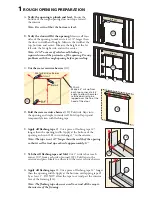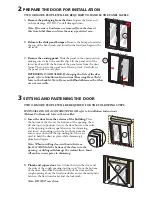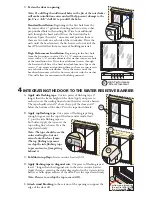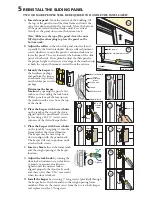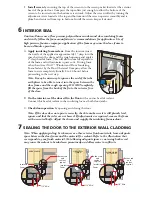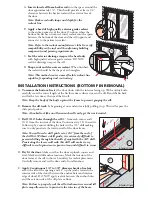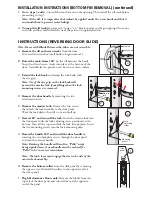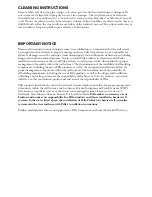
2
PREPARE THE DOOR FOR INSTALLATION
A.
Remove the packaging from the door.
Inspect the frame and
sash for damage. DO NOT install damaged units.
Note: If screens or hardware are removed from the door at
this time, label them and store them in a protected area.
TWO OR MORE PEOPLE WILL BE REQUIRED TO HANDLE THE PANEL SAFELY.
B.
Relocate the slide panel bumper.
Remove the bumper located at
the top of the fixed jamb, and install in the fixed jamb against the
sill track.
3
SETTING AND FASTENING THE DOOR
TWO OR MORE PEOPLE WILL BE REQUIRED FOR THE FOLLOWING STEPS.
Interior View
2B
£
Î
Ó
Ó
*OUFSJPS7JFX
C.
Remove the venting panel.
Slide the panel to the open position,
making sure it clears the anti-lift clip. Lift the panel out of the
lower track and tilt the bottom of the panel away from the door
frame. Then, lower the panel out of the top track. Carefully set
the panel aside in a safe place.
REVERSING DOOR SLIDE: If changing the slide of the door
panel, refer to Installation Instructions (Reversing Door Slide)
later in this booklet. Note: Doors with Blinds-Between-the-Glass
are not reversible.
IF INSTALLING ON A CONCRETE FLOOR, refer to Installation Instructions
(Bottom Fin Removal) later in this booklet.
Î
&YUFSJPS
Î
*OUFSJPS
Î
A.
Insert the door from the exterior of the building.
Place
the bottom of the door at the bottom of the opening, then
tilt the top into position. Center the door between the sides
of the opening to allow equal clearance for shimming,
and insert one roofing nail in the first hole from the
corner on each end of the top nailing fin. These are
used to hold the door in place while shimming it
plumb and square.
Note: When installing doors without a bottom
fin, DO NOT slide the bottom of the door into the
opening, as sliding will damage the sealant lines. Insert
sill anchor screws prior to shimming.
B.
Plumb and square door.
Insert shims between the door and
the sides of the rough opening starting up 6" from the bottom
of the door. Also shim between the top of the door and the
rough opening above the fixed interlocker and at the mid-point
between the fixed interlocker and the lock jamb.
Note: DO NOT over shim.


